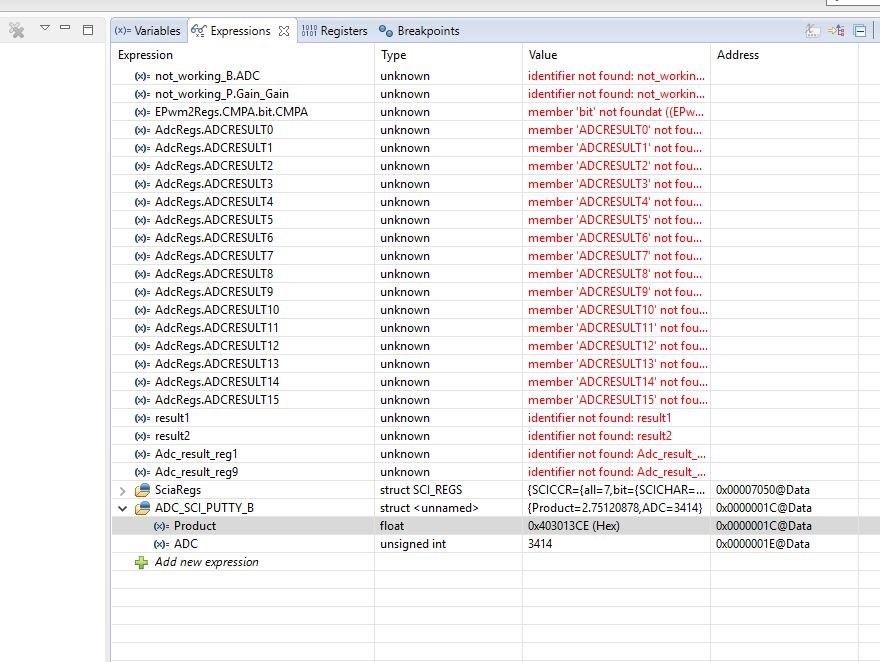Tool/software: Code Composer Studio
Hello,
This is what I'm working with at the moment:
- TMS320F28027 C2000 Launchpad
- CCS6 with the appropriate support packages installed
- Matlab w/ Simulink 2016a
I can communicate to and from the launchpad without issue, till now. I am trying to understand and control the ADC and have created a couple of simple Simulink programs to test it. My problem is that I'm able to control the ADC but I cannot get the values from the ADCRESULT register to send through the SCI to a terminal to verify them. One program simply sends a value every 5 seconds, and I'm able to see the "[" header and "]" terminator I'm using to define the result for now, but there is nothing in between them. I though that maybe the ADC wasn't working, but if I go into CCS and watch the ADCRESULT register I'm able to see the value changing appropriately when I apply voltage to the input pins. I'm unsure of what I'm doing wrong and other posts in the forum haven't really answered the similar issue. Could anyone possibly shed some light on this for me? Thank you.



